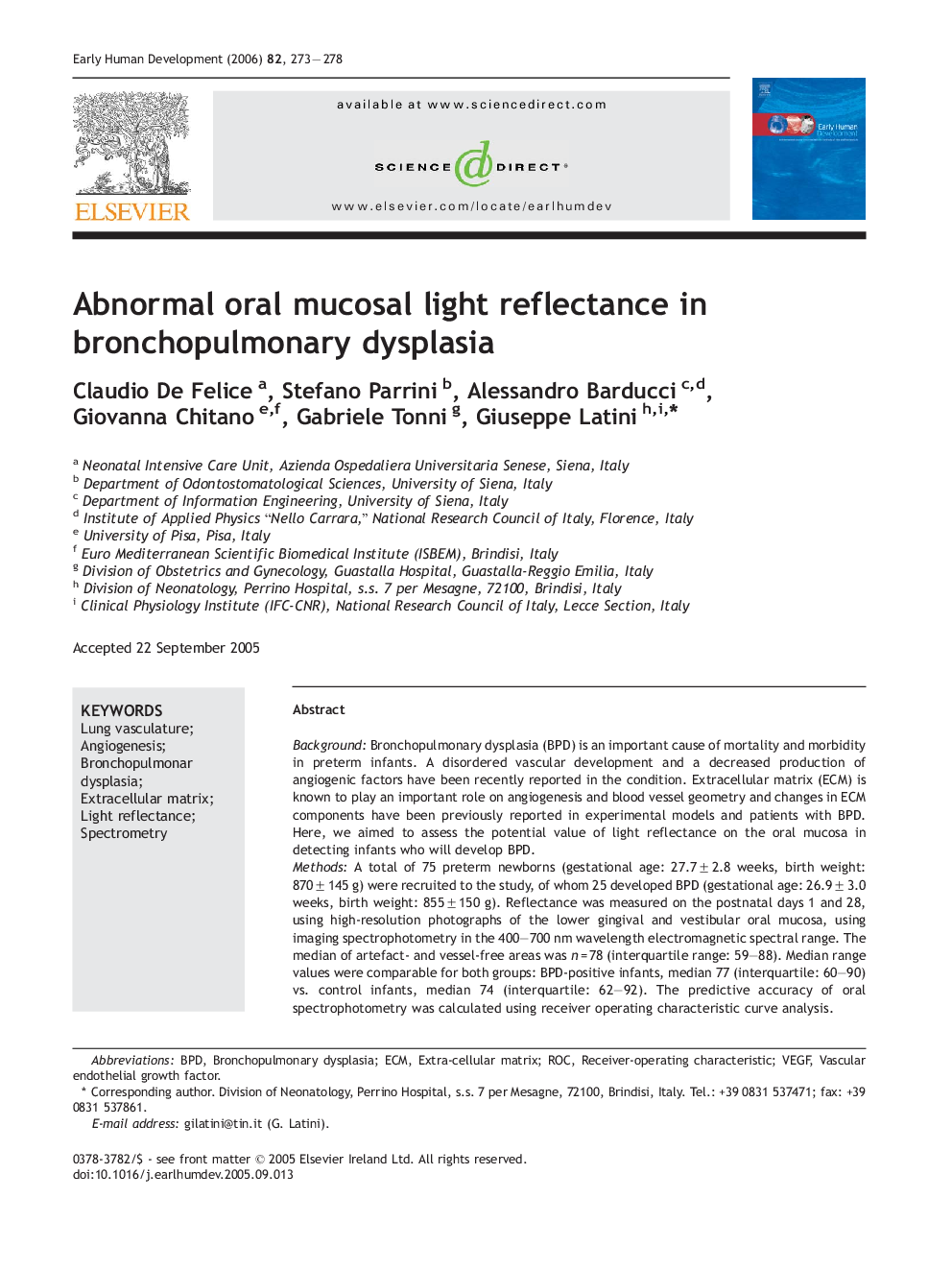| Article ID | Journal | Published Year | Pages | File Type |
|---|---|---|---|---|
| 3917430 | Early Human Development | 2006 | 6 Pages |
BackgroundBronchopulmonary dysplasia (BPD) is an important cause of mortality and morbidity in preterm infants. A disordered vascular development and a decreased production of angiogenic factors have been recently reported in the condition. Extracellular matrix (ECM) is known to play an important role on angiogenesis and blood vessel geometry and changes in ECM components have been previously reported in experimental models and patients with BPD. Here, we aimed to assess the potential value of light reflectance on the oral mucosa in detecting infants who will develop BPD.MethodsA total of 75 preterm newborns (gestational age: 27.7 ± 2.8 weeks, birth weight: 870 ± 145 g) were recruited to the study, of whom 25 developed BPD (gestational age: 26.9 ± 3.0 weeks, birth weight: 855 ± 150 g). Reflectance was measured on the postnatal days 1 and 28, using high-resolution photographs of the lower gingival and vestibular oral mucosa, using imaging spectrophotometry in the 400–700 nm wavelength electromagnetic spectral range. The median of artefact- and vessel-free areas was n = 78 (interquartile range: 59–88). Median range values were comparable for both groups: BPD-positive infants, median 77 (interquartile: 60–90) vs. control infants, median 74 (interquartile: 62–92). The predictive accuracy of oral spectrophotometry was calculated using receiver operating characteristic curve analysis.ResultsBPD patients showed significantly lower light reflectance values in the red (610–700 nm, P < 0.0001), with higher values in the violet (400 nm, P = 0.0056; 430 nm, P = 0.014), and blue-green (480–500 nm, P ≤ 0.024) sections of the spectrum already on the first day of life. A low reflectance value in the 640–700 nm wavelengths interval was found to identify BPD patients with 100% sensitivity and 100% specificity (640 nm: cutoff ≤ 44.91%; 650 nm: ≤ 45.64%; 660 nm: ≤ 46.56%; 670 nm: ≤ 47.14%; 680 nm: ≤ 47.56%; 690 nm: ≤ 48.95%; 700 nm: ≤ 50.81%).ConclusionsThese findings indicate the presence of previously unrecognised, early abnormalities in the average optical properties of the oral mucosa from infants developing BPD.
